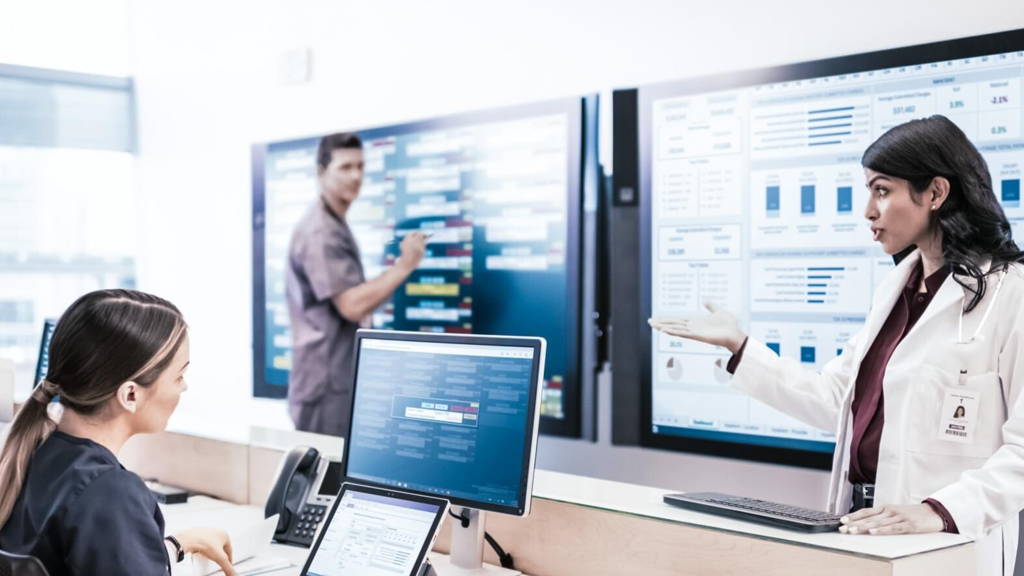Writing a blog for the Microsoft Enterprise website, Danielle Siarri says she has always been a tech savy health professional. ‘I traveled the United States working in various emergency departments, learning different electronic medical records (EHR). Additionally, I visited 20 different ER’s abroad, studying the various cultures and languages. I always loved technology and how it has influenced or affected providers, nurses, and patients.’
What Siarri never would have imagined, is the very swift fashion in which the Internet of Things (IoT), Mobile Health (mHealth) applications, and their effects on patient health would come into being. ‘The ecosystem of global citizens, providers, nurses, and data scientists has come to existing together at an accelerated rate, collecting data with the goal to improve patients health and safety. The patients are driving changes in their care, and wanting the data from mHealth devices to be shared with their providers.’
MHealth applications are improving health care in both developed and emerging economies through collecting data from patients, caregivers, health professionals, and researchers to create individual health plans. Siarri sees how a growing group of people is motivated to use mHealth for wellness care, preventive care and chronic issues. These ‘global citizens’ want their health care providers to have access to their data to structure a tailored health plan to improve their health.
MHealth is already changing how citizens interact with providers, writes Siarri. For example, the digital nomad (people who are location independent and use technology to perform their job) traveling from Oxford, England, to Dubai may use DrNow, a health app registered at the Care Quality Commission, which offers live video consultations with general practitioners (GP), prescriptions delivered to destination or home and sick notes. Or a truck driver in the US may use Teladoc to reach a physician or therapist while on the road and use a Withings blood pressure monitor, scale, and tracker to stay healthy on the road through an IoT wristwatch.
In the future, more patients will be treated outside of a hospital and in their home environment, thanks to ehealth-applications integrated into care systems. Real-time monitoring of vital signs contributes to creating personalized treatments and therapies, engages people to self-management their health , and encourages users to maintain an active and healthy lifestyle. But the future is here now: be on the lookout for the next IoT and mHealth coming to a home near you.
What Siarri never would have imagined, is the very swift fashion in which the Internet of Things (IoT), Mobile Health (mHealth) applications, and their effects on patient health would come into being. ‘The ecosystem of global citizens, providers, nurses, and data scientists has come to existing together at an accelerated rate, collecting data with the goal to improve patients health and safety. The patients are driving changes in their care, and wanting the data from mHealth devices to be shared with their providers.’
MHealth applications are improving health care in both developed and emerging economies through collecting data from patients, caregivers, health professionals, and researchers to create individual health plans. Siarri sees how a growing group of people is motivated to use mHealth for wellness care, preventive care and chronic issues. These ‘global citizens’ want their health care providers to have access to their data to structure a tailored health plan to improve their health.
MHealth is already changing how citizens interact with providers, writes Siarri. For example, the digital nomad (people who are location independent and use technology to perform their job) traveling from Oxford, England, to Dubai may use DrNow, a health app registered at the Care Quality Commission, which offers live video consultations with general practitioners (GP), prescriptions delivered to destination or home and sick notes. Or a truck driver in the US may use Teladoc to reach a physician or therapist while on the road and use a Withings blood pressure monitor, scale, and tracker to stay healthy on the road through an IoT wristwatch.
In the future, more patients will be treated outside of a hospital and in their home environment, thanks to ehealth-applications integrated into care systems. Real-time monitoring of vital signs contributes to creating personalized treatments and therapies, engages people to self-management their health , and encourages users to maintain an active and healthy lifestyle. But the future is here now: be on the lookout for the next IoT and mHealth coming to a home near you.






